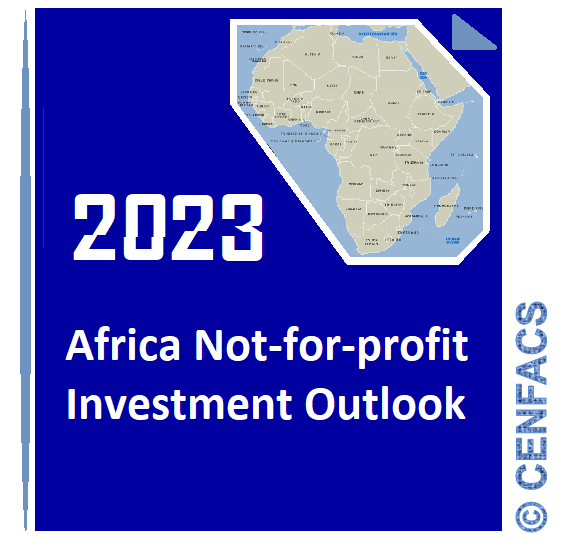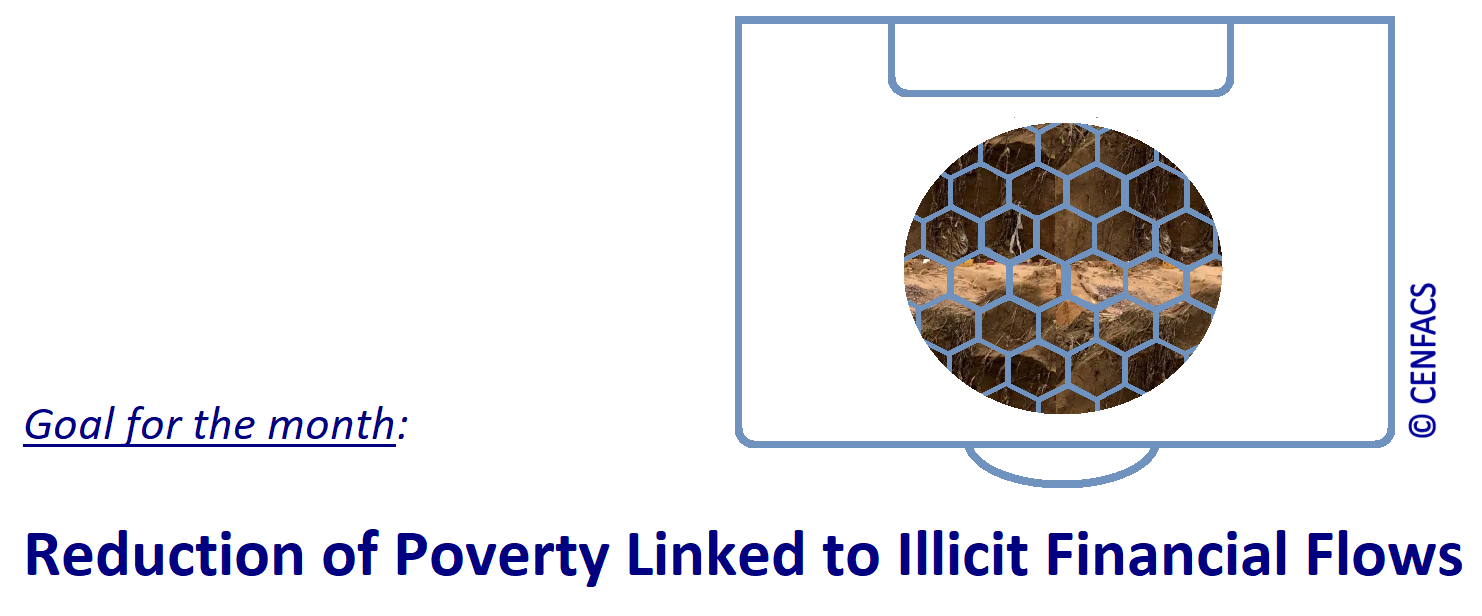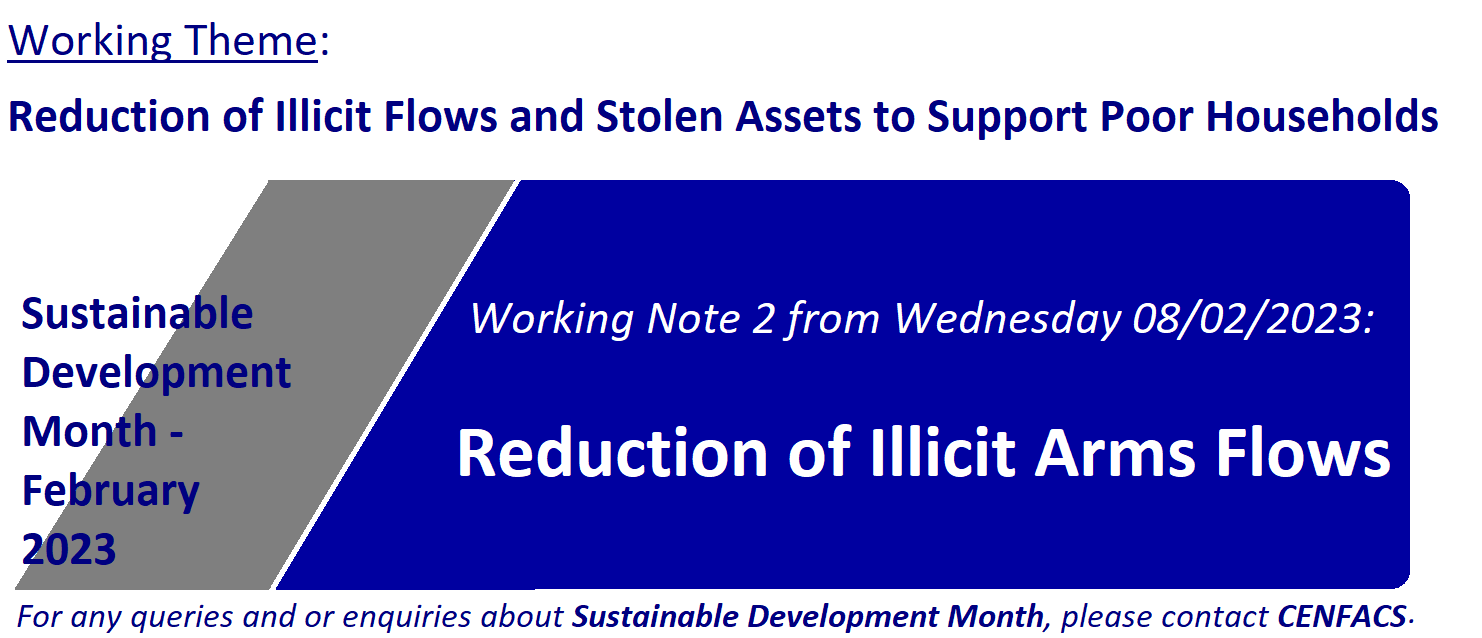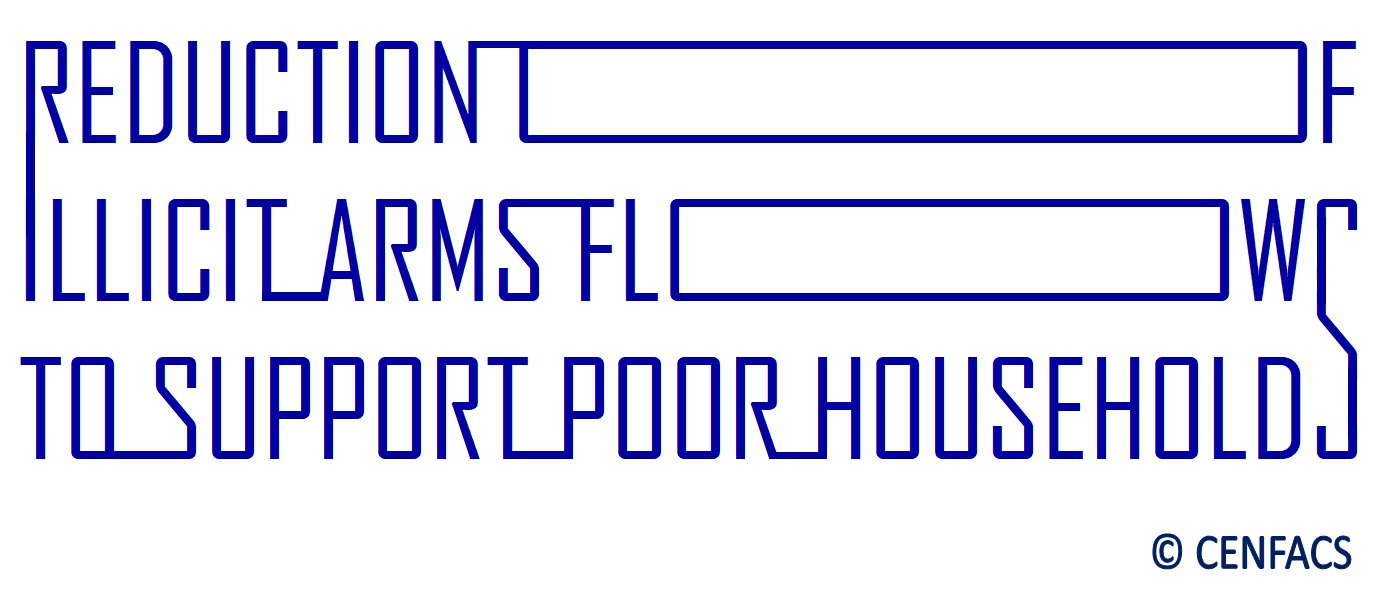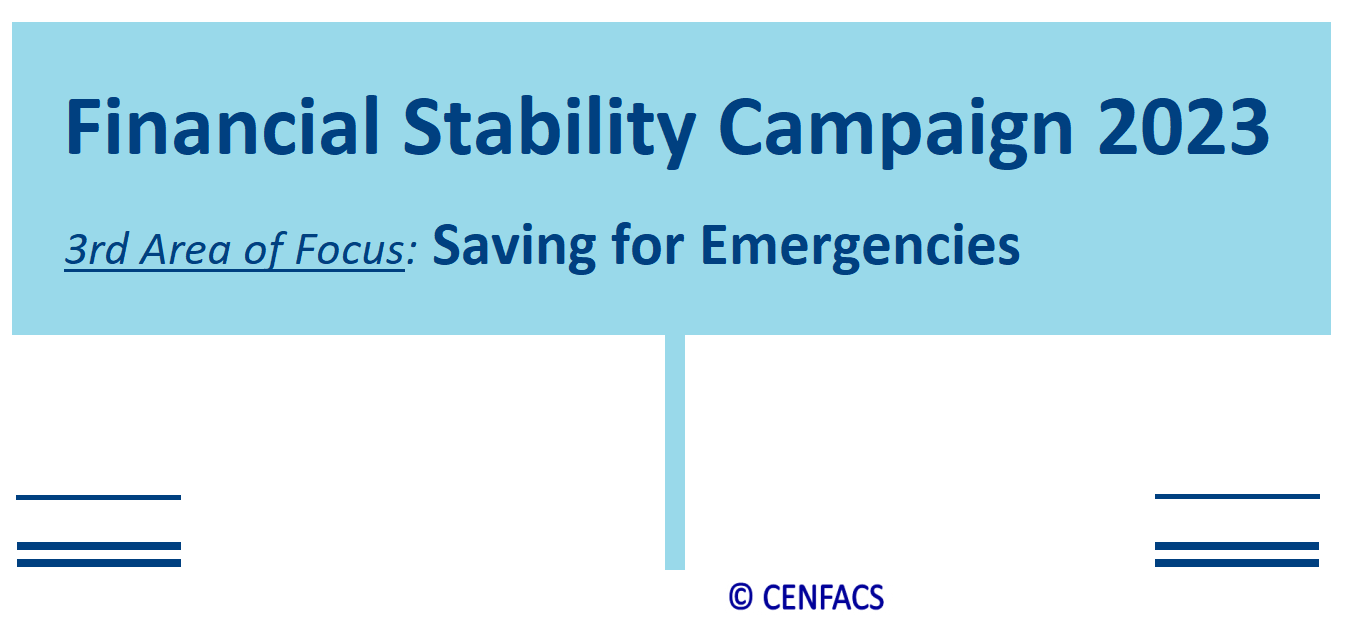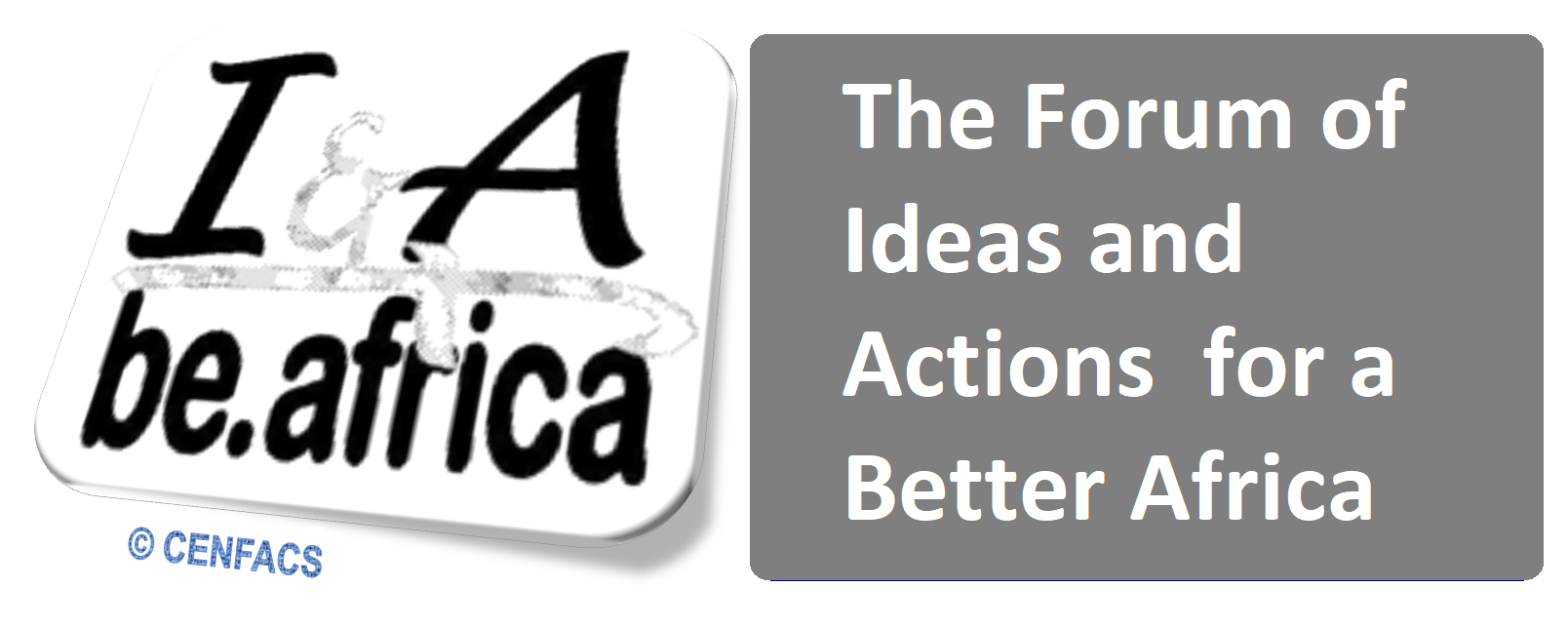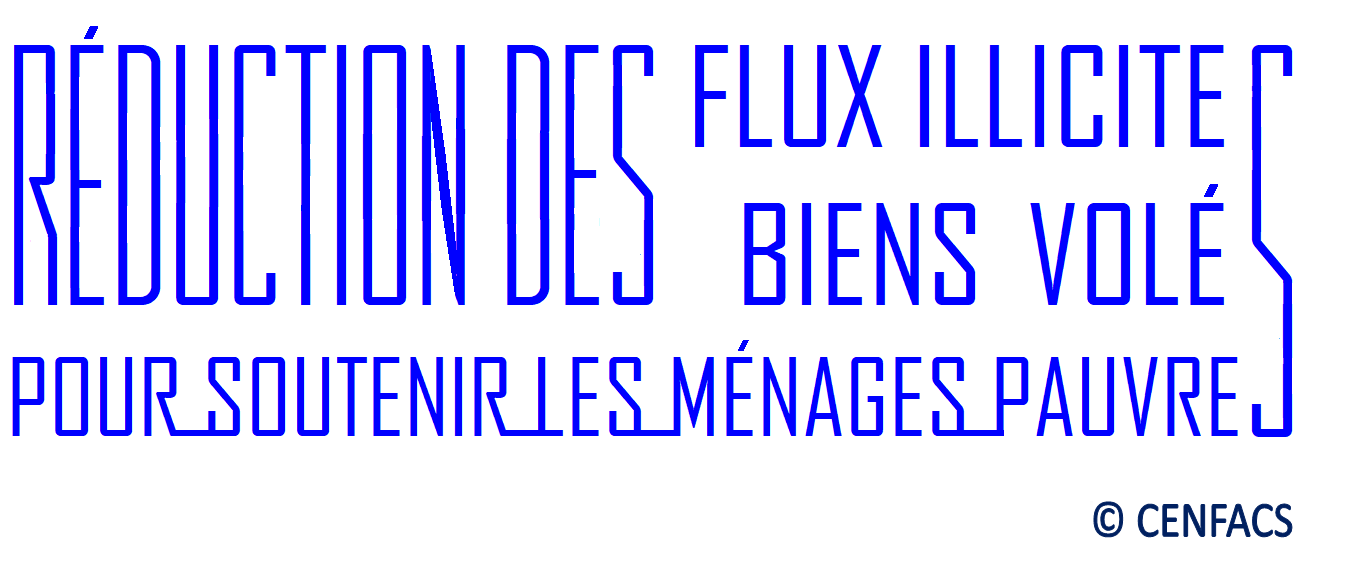Welcome to CENFACS’ Online Diary!
08 February 2023
Post No. 286
The Week’s Contents
• Africa Not-for-profit Investment Outlook 2023
• Reduction of Illicit Arms Flows to Support Poor Households
• Nature Projects and Nature-based Solutions to Poverty
… And much more!
Key Messages
• Africa Not-for-profit Investment Outlook 2023
Africa Not-for-profit Investment Outlook 2023 is a prospect for the future of the not-for-profit investment and development market in Africa as well as a view from CENFACS on the likely possibilities, openings and opportunities of not-for-profit investing in Africa in 2023 and probably beyond. The first release of this Outlook focuses on the areas or fields of poverty reduction to not-for-profit invest in Africa.
Africa Not-for-profit Investment Outlook 2023 has to be understood as an extension of CENFACS’ Guidance Programme for those who would like to not-for-profit invest in Africa. The Outlook does not replace the Guidance for Investing in Africa. It just adds value to it. It presents the information that not-for-profit investors may want in simple yet concise format.
In the focus on not-for-profit investing in Africa, we have summarised or highlighted areas or sectors that may be attractable for potential poverty-reducing investors in Africa. As it stands, it is a summary or highlight about market niches; it is not a listing of all areas or fields of not-for-profit investment in Africa. For each area or field highlighted, prospective not-for-profit investors will find three features: the needs, the opportunities and the types of investment expected.
More on Africa Not-for-profit Investment Outlook 2023 can be found under the Main Development section of this post.
• Reduction of Illicit Arms Flows to Support Poor Households (Note 2 of Sustainable Development Month)
Illicit proliferation of arms and ammunition do not only play a key role in violence and insecurity, they can also create or exacerbate poverty for the victims of violence and insecurity. This can happen at local/community level and in overseas development places. This is whether one speaks about heavy or light weapons, small or big ones.
For example, in humanitarian situations in insecurity hotspot places like in the East of the Democratic Republic of Congo and other insecurity hotspot areas of Africa, illicit arms flows are bringing poverty, human displacement, food insecurity, health poverty, gender violence, in brief human rights violation of all kinds.
Organisations working on the issue of illicit arms flows like Transparency International (1) argues that
“The diversion of weapons to, from and within conflict zones – including to non-state actors – risks exacerbating conflict, reinforcing a downward cycle of poverty and instability”.
Because of that, reducing illicit arms flows will help to provide peace, security and stability as well as the scaling down of poverty linked to these flows. Amongst the beneficiaries of this reduction of illicit arms flows are poor households living in insecure and violent areas where illicit arms are inflowing and outflowing. However, before going any further, let us try to understand what illicit arms flows are.
• • What are illicit arms flows?
On their background paper through the website ‘sipri.org’ (2), Mark Bromley et al. (2) state that there is no universally agreed interpretation of the phrase ‘illicit arms flows’. According to Mark et al.,
“Illicit arms flows are described as consisting of any cross-border movement of arms that has not been approved by both the exporting and importing state”.
They also explain that
“Illicit arms deliveries are deliveries to an unauthorised end user or recipient without making reference to who is doing the authorising” (p. 9)
The above mentioned definition and explanation will help to assess the extent to which the reduction of illicit arms flows can open up a space for support to poor households. However, to make this reduction more palpable, it is better to measure illicit arms. As an example of measures, the Inter-agency and Expert Group on Sustainable Development Goals (3) provided the following indicator (known as Indicator 16.4.2) to measure illicit arms:
“The proportion of seized, found or surrendered arms whose illicit origin or context has been traced or established by a competent authority in line with international instruments”.
The above understanding and indicator of illicit arms flows are the tools that one can use to help reduce illicit arms flows. In particular, they provide CENFACS the conceptual tools to work with community here in the UK and Africa-based Sister Organisations (ASOs) on this issue.
• • Working with the Community on the Reduction of Illicit Arms Flows (RIAFs) to Support Poor Households
There is a number of areas on which CENFACS can work with the community to impact the reduction of illicit arms flows to support poor households. These areas include:
√ Raising awareness about the fight and eradication of illicit trade in small arms and light weapons in all their aspects
√ Sensitising the community about arms control instruments
√ Supporting cross-border community understanding initiatives
√ Advice to our members to use peaceful means to resolve disputes within the community and between the community and others
√ Making the root causes of illicit arms flows and of poverty as an urgent matter
√ Helping the community to understand relevant instruments in illicit arms matter such as arms trade treaties, programmes of action to prevent the proliferation of illicit arms, arms tracing instruments, etc.
√ Sharing data-collection efforts on illicit arms
√ Signposting poor households in need of support to relevant organisations and services dealing with illicit arms flows and their consequences, since illicit arms flows are not an area of specialisation of CENFACS.
• • Working with ASOs on the Reduction of Illicit Arms Flows to Support Poor Households
CENFACS can as well work with ASOs dealing with Reduction of Illicit Arms Flows (RIAFs) to Support their Poor Households by:
√ Sharing news, information, knowledge and tools relating to the reduction of illicit arms flows
√ Making humanitarian appeals to support poor people and households victims of insecurity and violence because of the ill consequences of illicit arms flows (consequences like human displacement, hunger, disease, destruction of basic infrastructure, human tragedies, etc.)
√ Helping communities to understand relevant instruments in illicit arms matter such as international arms trade treaties, programmes of action to prevent the proliferation of illicit arms, arms tracing instruments, mutual benefit-sharing instruments, etc.
√ Making the root causes of illicit arms flows and of poverty as life-saving matter
√ Campaigning for peace and security between communities in Africa
√ Promoting dialogue to resolve ethnic tensions and differences in Africa
√ Helping in the reduction of cross-border and cross-community poverty in Africa
Etc.
In short, illicit arms flowing between communities could pose problems not only of security and peace, but also of creating or exacerbating poverty for those who are poor and amongst them are poor households. Reducing these illicit arms flows could have a double impact which is: peace and reduction of poverty linked to illicit arms flows.
For those members of our community who may be interested in matter relating to RIAFs, they are free to contact CENFACS. For those Africa-based Sister Organisations that are willing to collaborate with us on RIAFs matter, they can let CENFACS know.
For any other queries or enquiries about Sustainable Development Month and the Reduction of Illicit Arms Flows to Support Poor Households, please also contact CENFACS.
• Nature Projects and Nature-based Solutions to Poverty
Nature Projects are run since CENFACS was established. Examples of Nature Projects run by CENFACS include Flora and Fauna projects, ‘A la une‘ and the Big Beasts Campaigns. However, since the Kunming-Montreal Global Biodiversity Framework (4) was agreed in December 2022, we have decided to extend the scope and depth of the kinds of Nature Projects we run.
This extension is as well explained by the need within the community to find Nature-based Solutions to Poverty and hardships they are facing. In other words, the community is looking for the process of finding answers to their problems via nature means. In this respect, Nature Projects come with them Nature-based Solutions to Poverty. But, how do we define Nature Projects and Nature-based Solutions?
• • Definition of Nature Projects and Nature-based Solutions
• • • Nature Projects
Nature Projects are a series or group of poverty-reducing initiatives, activities, plans, schemes and proposals designed by CENFACS with the following three objectives in mind:
a) to work with the community about the importance of the nature in their/our daily lives and in the process of reducing poverty
b) to reconnect this community with nature (that is, plants, animals and landscapes)
and c) to keep up parts of the nature to their pre-human conditions.
These Nature Projects include two types of project: our Regular Nature Projects which we have been so far running as mentioned above and New Nature Projects.
Additionally, nature goals contained in the Kunming-Montreal Global Biodiversity Framework will be rolled out into the New Nature Projects. These New Nature Projects are the implementation of these goals with the community we serve and our Africa-based Sister Organisations.
The New Nature Projects will be about:
√ Maintaining, enhancing and restoring the integrity, connectivity and resilience of ecosystems
√ Reducing the extinction of known threatened species
√ Valuing nature’s contributions to our life, our community members’ life, our solutions to poverty.
• • • Nature-based Solutions
There are many interpretations of Nature-based Solutions. The definition we are going to use come from ‘climatechanmpions.unfcc.int’ (5); definition which is:
“Nature-based Solutions are actions and policies that protect, manage and restore natural ecosystems, while addressing social challenges”.
Because we are arguing about Nature-based Solutions to Poverty, we are going to work with nature to address social challenges (like social poverty) while making sure that both our project beneficiaries and biodiversity benefit.
• • Implementing Nature Projects and Nature-based Solutions to Poverty
In the coming weeks and months, we shall have the progressive implementation of this new generation of Nature Projects and Nature-based Solutions to Poverty in the forms of planned themed activities, events, workshops, etc. The themes, days, times and locations (whether online or in-person) of these initiatives will be announced.
For those who would like to find out more about Nature Projects and Nature-based Solutions to Poverty, they can contact CENFACS.
Extra Messages
• Financial Stability Campaign 2023 – Third Area of Focus: Saving for Emergencies
• Triple-value-initiative Start-up/Planning
• CENFACS’ be.Africa Discusses the Africa Climate Risk Facility
• Financial Stability Campaign 2023 – Third Area of Focus: Saving for Emergencies
Our Financial Stability Campaign 2023, which is conducted equally with Financial Controls 2023, is now focusing on savings one can make to manage unexpected financial situations and unforeseen financial circumstances of life job loss, medical emergency, losses in the financial market, home appliances breakdown, etc. When these circumstances or situations arrive, saving or emergency fund can help. But, what is saving? What is an emergency fund?
• • Basic understanding of saving and emergency fund
To basically understand saving, we have chosen its definition from ‘Quicken.com’ (6) which states this:
“Savings refer to money you put aside for future use rather than spending it immediately”.
‘Quicken.com’ also adds that
“One of the most important things to save for is unexpected financial emergencies. This can include losing your job, unexpected health issues or your car or other home appliances breaking down, so you should have between three and six months worth of living expenses set aside”.
To save for unexpected financial emergencies means one needs to build an emergency fund. What is an emergency fund?
Amongst the definitions of emergency we found is the one given by ‘fidelity.com’ (7), which is:
“Cash you keep in reserve for serious unexpected predicament like a job loss or a catastrophe that is not covered by insurance”.
The above-mentioned definitions will help in working with the community under this campaign to explore ways of saving for emergencies during this challenging economic time of the cost-of-living crisis, especially of soaring interest rates (at the moment the base interest rate stands at 4% in the UK, according to the Bank of England).
• • Working with the community to explore ways of saving for emergencies
The saving we are talking about is private one. By definition, private saving equals to income minus taxes minus consumption. In simple mathematical terms, it will be as follows:
Saving = (Income – Taxes) – Consumption
However, there is a problem with poor people and families for and on whose behalf we are campaigning. They do not have enough income and use most of their income to meet basic life-sustaining needs of consumption or non-discretionary expenses. These expenses on their basic needs are uncuttable. Mathematically and in reality, they are unable to create or build saving.
To create saving one can either increase their income or trim their consumption or do both. For poor people and families, it is very difficult to create or build saving in the context of the above saving model. It is as well improbable that they can build an emergency fund without help. The theory about emergency fund states that one needs at least 3 to 6 months an emergency fund.
Because of this difficulty or improbability, there is a need to campaign for financial stability. Our campaign in relation to saving for emergencies will revolve around the following:
√ Planning ahead with them their saving and emergency fund
√ Helping campaign beneficiaries to set up their emergency fund goal and target (e.g., 3 to 6 months)
√ Working out the emergency fund they really need
√ Exploring ways to boost income or trim spending to create savings or do both
√ Understanding savings tracker
√ Establishing their financial reserves
√ Helping them create an emergency saving account
√ Finding and removing barriers to build saving or emergency fund
√ Working with them to avoid financial losses
√ Managing both emergency fund account and liquid accounts
√ Making a plan on when to dip into emergency fund
√ Finding insurance protection schemes for emergency if they cannot save for emergencies
√ Providing advice and tips on how to separate emergency fund from spending money and other types of saving
√ Sharing with the community what we have to offer to make saving for emergencies to materialise in their lives
√ Making suggestions on better way of storing cash using for example certificates of deposit or money market fund
√ Turning their saving for an emergency fund into a regular commitment rather than an exception to the rule
Etc.
As part of this area of campaign, steps can be taken to influence those who have the key to decision on reduction poverty matter so that poor people can create saving for emergencies or provide them a cover if they are unable to do so.
Finally, this third area of campaign is about how we can reduce or end poverty because of the lack of saving for emergencies. The continuing rise of prices and costs of living can only put pressure on the possibility of saving for emergencies. Those who do not have saving for emergencies may see the prospect of getting out poverty very distant to them.
The above is the third area of focus about our Financial Stability Campaign 2023. To ask for help or enquire about the third area of our focus, please do not hesitate to communicate with CENFACS.
To support this campaign, please contact CENFACS.
• Triple-value-initiative Start-up/Planning
In order to support those who have decided or may decide to engage with All-year Round Projects or Triple Value Initiatives, we are running start up sessions for each of them (i.e. Run, Play and Vote projects). What do we mean by running start up sessions for Run, Play and Vote projects?
• • Start up for Run, Play and Vote Projects
Start up for these projects is about working with whoever decides to execute the above mentioned projects to set the tone of their projects and expectations for themselves. It is also about setting realistic goals and working out the right methodology from the beginning to the end in their project journey. It includes better planning and management.
• • Phases of project planning and management
We are going to deal with different phases of project planning or start up from the idea (of running or playing or voting) to the initiative implementation, monitoring and evaluation.
Whether you want to run or play or vote; you need to undertake a basic project planning in terms of the way you want to do it. This basic project planning/start-up will include things like the following:
σ Aims (changes you plan to achieve)
σ Impact (a longer-term effects of your project)
σ Inputs (resources you will put into your initiative)
σ Monitoring (regularly and systematically collecting and recording information)
σ Outcomes (changes and effects that may happen from your initiative)
σ Indicators (measures or metrics that show you have achieved your planned outcomes)
σ Budget (income and expenses for your initiative)
σ Reporting (sharing your actions and results)
Etc.
As we all know, not everybody can understand these different steps they need to navigate in order to make their initiative or project a success story. That is why we are offering this opportunity to those who would like to engage with the Triple Value Initiatives (Run, Play and Vote projects) to first talk to CENFACS so that we can together soften some of the hurdles they may encounter in their preparation and delivery.
For those who would like to discuss with CENFACS their Triple-value-initiative plans or proposals, they are welcome to contact CENFACS.
• CENFACS’ be.Africa Discusses the Africa Climate Risk Facility
On 9 November 2022 in Sharm El Sheikh (Egypt) at COP27 (the 27th Conference of the Parties) side event, the African Insurance Industry leaders committed to underwrite $14 billion of cover for Africa’s climate risks by 2030 (8).
Through this underwriting act, they laid down the foundations of Africa Climate Risk Facility, which is – as these leaders defined it themselves – a mechanism that will scale private sector underwriting of climate disaster risk in Africa.
As part of the continuation of our work on ‘Promoting the Culture of Insurance amongst Those in Need to Reduce Poverty in Africa’ which we conducted last month, we would like to discuss the implications of this Africa Climate Risk Facility for insurance poverty reduction in Africa, particularly but not exclusively in our area of operation in Africa.
In this discussion, we will try to answer the following questions:
~ How can this facility (or an African-led solution to loss and damage) promote the culture of insurance amongst those in need to reduce insurance poverty in Africa?
~ How can local market-based disaster risk finance solutions use this facility and help the uninsured or the inadequately insured in Africa?
~ How can risk transfer solutions relating to climate change impacts (e.g., flood, drought and tropical cyclones) support resilience amongst the insurance poor via this facility?
Those who may be interested in this discussion, they can contact CENFACS to join and or contribute.
To communicate with CENFACS regarding this discussion, please use our usual contact details on this website.
Message in French (Message en français)
Mois du développement durable avec la réduction des flux illicites et des biens volés pour soutenir les ménages pauvres
Février est le mois du développement durable, selon le calendrier de développement du CENFACS.
• Qu’est-ce que le mois du développement durable?
C’est le mois au cours duquel nous revisitons nos travaux relatifs au développement durable. En particulier, nous essayons d’examiner à nouveau les dix-sept objectifs de développement durable (ODD) des Nations Unies (9) et leurs 169 cibles connexes.
Nous sélectionnons normalement l’un des sujets dans l’ensemble des ODD et des cibles; et essayez d’y travailler. Pour ce mois de février 2023, nous avons sélectionné l’objectif 16 et la cible 4 de cet objectif.
L’objectif 16 est de promouvoir l’avènement de sociétés pacifiques et ouvertes à tous aux fins du développement durable, assurer l’accès de tous à la justice et de mettre en place, à tous les niveaux, des institutions efficaces, responsables et ouvertes à tous.
La cible 4 de l’objectif 16 est de réduire nettement les flux financiers illicites, le traffic d’armes illicites, renforcer les activités de récupération et de restitution des biens volés et lutter contre toutes les formes de criminalité organisée, d’ici à 2030.
Pour faire fonctionner notre Mois de la durabilité, nous allons impliquer les membres de notre communauté à travers les aspects choisis de la cible 4 tout en gardant l’esprit de l’objectif 16 tel qu’il a été mis en place par les Nations Unies.
• Inciter nos membres à soutenir la réduction des flux financiers et celle d’armes illicites, ainsi que la récupération et la restitution des biens volés
Nous engageons en effet les membres de notre communauté à soutenir les messages contenus dans l’objectif 16 et la cible 4 de cet objectif. Nous plaidons également pour qu’une partie du produit de la réduction des flux financiers et d’armes illicites ainsi que du recouvrement et de la restitution des avoirs volés soit affectée à la réduction de la pauvreté et au soutien des ménages pauvres.
Notre plaidoyer peut s’expliquer comme suit. Pendant la pandémie de coronavirus et même maintenant en cette période de crise du coût de la vie, il y a eu des recherches de financement pour faire face aux coûts de la catastrophe du coronavirus et de la crise du coût de la vie.
Bien qu’une partie du financement ait été obtenue par diverses sources telles que des subventions, des dons et des prêts; il y a d’autres sources de financement qui sont inexploitées. Parmi ces sources inexploitées figurent les flux financiers illicites et la valeur monétaire des biens volés.
Pourtant, ces fonds inexploités ou dormants auraient pu être trouvés et mis à disposition pour contribuer aux efforts visant à faire face aux effets persistants de la catastrophe du coronavirus et aux effets paralysants de la crise du coût de la vie. Ces flux financiers illicites et ces avoirs volés pourraient être suivis, récupérés et restitués là où ils appartiennent ou où ils ont été pris.
Les responsables du processus de traitement de ces flux illicites et de ces avoirs volés peuvent négocier avec leurs propriétaires (publics ou privés) et explorer la possibilité de libérer une partie des fonds et avoirs récupérés pour financer la pauvreté et les causes méritoires. Ils pourraient être utilisés pour soutenir les pauvres et les ménages pauvres.
Par exemple, dans le cadre de la construction d’un redressement durable en Afrique, il est compréhensible que l’Afrique demande le suivi, le recouvrement et la restitution des flux financiers illicites et des biens volés. Il y a eu des réponses positives à la demande de l’Afrique pour la restitution des avoirs volés, même s’il reste encore beaucoup à faire.
Il est également logique que le CENFACS plaide pour qu’une partie des dividendes provenant de la réduction des flux financiers et d’armes illicites et du recouvrement et de la restitution des avoirs volés soit utilisée pour soutenir les ménages pauvres. Cela peut être fait selon des termes, conditions et modalités clairement définis.
Pour nous permettre d’aborder le thème de la réduction des flux financiers et d’armes illicites et de la récupération et de la restitution des biens volés, nous avons organisé un plan de travail pour ce mois de février 2023. Pour ceux ou celles qui sont intéressé(e)s à notre plan de travail en la matière, ils/elles peuvent contacter le CENFACS.
Main Development
• Africa Not-for-profit Investment Outlook 2023
In Focus: Areas or Fields of Poverty Reduction to Invest in Africa
Our coverage of Africa Not-for-profit Investment Outlook 2023 includes two items:
σ What is a Not-for-profit Investment?
σ Areas or Fields of Poverty Reduction to Invest in Africa.
Let us highlight each of these items.
• • What is a Not-for-profit Investment?
It is a sum of money puts into a not-for-profit organisation in order to help this organisation achieve its not-for-profit mission. Not-for-profit means that the organisation is not engaged in the activity of realising a greater difference between its sales revenue and total costs. Instead, the organisation aims at providing services without making profit, services that benefit its members or the community as specified in its governing document.
This not-for-profit investment can be in the physical or financial form. Therefore, there are two types of investment that not-for-profit investors can choose in order to engage in, which are: physical or real investment and financial investment.
σ Physical or real investment normally includes fixed capital assets (such as machinery and equipment) and stocks.
σ Financial investment consists of purchasing financial securities like shares and bonds. In this financial investment, one can consider portfolio investment as well.
In the context of the not-for-profit development, we are preoccupied with those types of investment that are not meant to earn income in the form of dividend, interest and rent payments. We shall instead deal with those investments that bring high return of poverty reduction for projects and programmes beneficiaries in Africa. In other words, we are interested in how to make your finances return for poverty reduction instead of profit.
• • Areas or Fields of Poverty Reduction to Invest in Africa.
The following are the possible areas of investing in Africa. They include the needs, opportunities and investments expected.
σ African Continental Free Trade Area (AfCFTA)
The need: The operationalisation of the AfCFTA requires not only for-profit investments but also not-for-profit investors to provide services and products to communities in need making this trade area.
The opportunity: Because of its size in terms of population (that is., 1.3 billion people across 55 countries), the AfCFTA provides a tremendous window of opportunities and potentials for not-for-profit investors.
The Investment: Projects to provide digital and literacy inclusion to close the digital infrastructure gap, of resilient and unfragmented internet in Africa will be welcome. Also, projects to give new tools of trade for not-for-profit African Organisations (including charities and community groups) operating in this free trade area will bolster these organisations’ capacity and expand their poverty-reduction results.
σ Climate-smart Development
The need: Africa is looking for a climate-smart path to attain Sustainable Development Goals.
The opportunity: The severe impact of climate change creates opportunity as Africa cannot alone afford to mitigate this impact.
The investment: Funding sustainable-development-goals investments and investing in climate-vulnerable key sectors (such as energy, agriculture, transport, water and cities) will be attractable.
σ Clean Energy and Transition
The need: Increasing energy demand and the desire to close the energy deficit provide the necessity for clean energy development.
The opportunity: There is abundance of forms of renewable energy resources, particularly solar, hydro, wind and bioenergy.
The investment: Projects to tackle Africa’s energy paradox (that is, abundant energy resources with high deficit in access to modern energy) and projects for transformative deployment of clean energy especially in the poor areas of Africa will be well suited.
σ Women, Girls and Inequality
The need: There is a high level of inequality for women and girls in many areas of life.
The opportunity: There is a lot of opportunities to close inequalities for women and girls
The investment: Projects to enable women and girls to rightfully occupy their place in the process of poverty reduction and development will be welcome.
σ Conflict Resolution
The need: There are hotspot conflict-prone and -afflicted zones of Africa (like the border areas of Burkina Faso, Mali, Niger, etc.) that require an end to insecurity and violence due to armed conflicts.
The opportunity: There are opportunities to resolve conflicts, to negotiate and bring peace to those areas affected by conflicts.
The investment: Projects to reduce illicit arms flows, to invest in security, to end conflicts and sustain peace like investing in sports for peace will be recommended.
σ Food Security
The need: Africa has a high prevalence of food insecurity as its has a huge number of food insecure countries with hardest hit by the unprecedented food and nutrition crisis such as Burkina Faso, Chad, the Democratic Republic of Congo, Mali, Niger, etc.
According to the World Food Programme and Food and Agriculture Organisations of the United Nations (10), the number of people in acute food insecurity in 2022 (most recent projections) in millions would be in the hotspot countries below as follows:
3.5 in Burkina Faso, 2.2 in Central African Republic, 2.1 in Chad, 25.9 in Democratic Republic of Congo, 2.1 in Madagascar, 1.8 in Mali, and 4.4 in Niger (p. 8).
The opportunity: There are high food prices and a lack of fair distribution of food, especially in areas that are difficult to access because of lack of transport facilities and of security. Not-for-profit food investors can reap off the benefit by using home-grown solutions to provide affordable and easily accessible food products to food insecure.
The investment: Projects to prevent, detect and treat acute child malnutrition while facilitating access to food and making food affordable for the food insecure and poor will help to reduce food poverty.
σ Education and Healthcare
The need: Africa needs to safeguard and increase investments in education and healthcare which continue to suffer the consequences of the coronavirus and other effects (like armed conflicts and climate change disaster).
The opportunity: In conflict-stricken and climate-impacted areas of Africa, there are opportunities to build schools and health centres, provide educational and health resources, and to equip crisis-stricken communities with digital tools.
The Investment: Projects to rebuild destroyed educational and health infrastructures destroyed by armed conflicts and natural disasters are sought to help the victims of these events.
σ COVID-19 Vaccine Inequality
The need: Africa is lagging behind regions of the world with fully vaccinated people against the coronavirus pandemic; and the demand for health workers to cover shortages is high in Africa.
The opportunity: Africa is vulnerable to renewed outbreaks and the possible arrival of new COVID-19 variants.
The investment: Not-for-profit investing in awareness raising to curb vaccine hesitancy and low risk perception of the spread of the coronavirus pandemic will help to deploy COVID-19 vaccination and to improve people’s minds about the positive effects of COVID-19 vaccination.
σ Democracy and Human Rights
The need: To continue to build democratisation processes in Africa, poor people need to be heard.
The opportunity: In 2023, there are almost 24 countries that are holding polls ranging from local to parliamentarian and presidential votes.
The investment: Projects of free speech, the right to express a choice/opinion (or freedom of expression) and the right to online autonomy and privacy will help the voiceless to express their need of poverty reduction.
σ Digital Inequality
The need: To widely reduce poverty in Africa, it requires for many of project beneficiaries working with a number of the organisations that CENFACS is dealing with to reduce digital inequality.
The opportunity: Due to the lack of access to the majority of these beneficiaries to digital technologies and facilities, there is an opportunity to invest in human-centred digital projects to reduce digital inequality.
The investment: Projects of resilient, open, inclusive, safe and secure internet access for the vulnerable and unconnected poor like the above-mentioned beneficiaries will be a not-for-profit investment to bridge digital divide or gap.
The above are some highlights regarding the prospect for not-for-profit investing in Africa. These highlights are part of a series of advice and tips planned for 2023 to work with potential not-for-profit investors.
As argued earlier, these highlights cover only some areas or fields of investing in Africa. For those not-for-profit investors who are interested in a particular area or field and would like to dive deeper into it, they are free to contact CENFACS.
For any other enquiries or queries about Africa Not-for-profit Investment Outlook 2023 and Guidance for Investing in Africa, please do not hesitate to contact CENFACS.
_________
• References
(1) https://ti-defence.org/what-we-do/industry-integrity/illicit-arms-flows/ (Accessed in February 2023)
(2) Bromley, M., Caparini, M. & Malaret, A. (2019), Measuring Illicit Arms and Financial Flows: Improving the Assessment of Sustainable Development Goal 16, Sipri, SIPRI Background Paper at https://sipri.org/sites/default/files/2019-07/bp_1907_sdg_16.pdf (Accessed in February 2023)
(3) https://unstats.un.org/sdgs/metadata/files/Metadata-16-04-02pdf (Accessed in February 2023)
(4) https://www.cbd.int/article/cop15-cbd-press-release-final-19dec2022 (Accessed in February 2023)
(5) https://climatechampions.unfccc.int/what-are-nature-based-solutions-and-how-can-we-finance-them/# (Accessed in February 2023)
(6) https://www.quicken.com/blog/what-savings/ (Accessed in February 2023)
(7) https://www.fidelity.com/viewpoints/personal-finance/save-for-an-emergency# (Accessed in February 2023)
(8) https://fsdafrica.org/press-release/leveraging-the-african-insurance-industry-to-create-resilient-african-economies/# (Accessed in February 2023)
(9) https://sdgs.un.org/2030agenda (Accessed in February 2023)
https://intranet.pactemondial.org/storage/base_documentaire/Liste%20des%2017%20ODDet%20169&20Cibles.pdf (Accessed in February 2023)
(10) WFP and FAO, (2022), Hunger Hotspots, FAO-WFP early warnings on acute food insecurity, October 2022 to January 2023 Outlook, Rome (Accessed in February 2023)
_________
• Help CENFACS keep the Poverty Relief work going this year
We do our work on a very small budget and on a voluntary basis. Making a donation will show us you value our work and support CENFACS’ work, which is currently offered as a free service.
One could also consider a recurring donation to CENFACS in the future.
Additionally, we would like to inform you that planned gifting is always an option for giving at CENFACS. Likewise, CENFACS accepts matching gifts from companies running a gift-matching programme.
Donate to support CENFACS!
FOR ONLY £1, YOU CAN SUPPORT CENFACS AND CENFACS’ NOBLE CAUSES OF POVERTY REDUCTION.
JUST GO TO: Support Causes – (cenfacs.org.uk)
Thank you for visiting CENFACS website and reading this post.
Thank you as well to those who made or make comments about our weekly posts.
We look forward to receiving your regular visits and continuing support in 2023 and beyond.
With many thanks.
